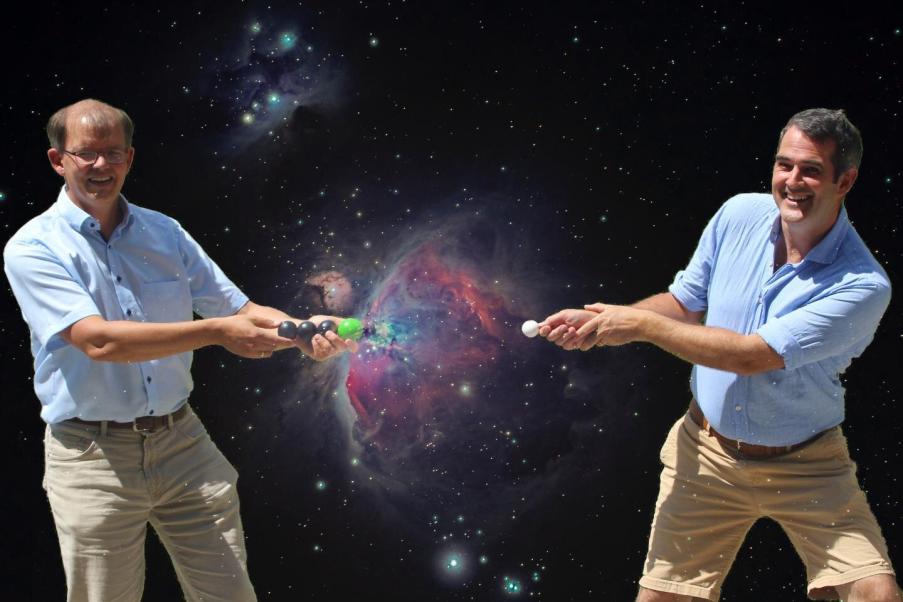How Can We Predict When the Northern Lights Will Appear?
The Northern Lights, also known as Aurora Borealis, are a mesmerizing natural phenomenon that has captivated people for centuries. These celestial displays occur when charged particles from the sun interact with Earth's magnetic field, creating a breathtaking spectacle of light and color in the sky.

Predicting the exact timing and intensity of the Northern Lights can be challenging, but scientists and enthusiasts have developed various methods to help us anticipate these celestial events.
I. Causes Of The Northern Lights:
A. Solar Activity:
- Sunspots and Solar Flares: Sunspots are dark areas on the sun's surface, indicating regions of intense magnetic activity. Solar flares are sudden bursts of energy that erupt from the sun, releasing charged particles into space.
- Coronal Mass Ejections (CMEs): CMEs are large clouds of charged particles ejected from the sun's corona during solar storms. These CMEs can travel towards Earth and interact with its magnetic field, triggering auroral displays.
- Solar Wind: The solar wind is a continuous stream of charged particles emitted from the sun's corona. The strength and speed of the solar wind can influence the intensity and location of the Northern Lights.
B. Earth's Magnetic Field:
- Interaction with Charged Particles: The Earth's magnetic field acts as a shield, deflecting most of the charged particles from the sun. However, some particles are guided along the field lines towards the poles, where they interact with atoms and molecules in the atmosphere, causing them to emit light.
- Formation of Auroral Oval: The auroral oval is a region around the Earth's magnetic poles where the Northern Lights are most commonly visible. The location and intensity of the auroral oval vary depending on the strength of solar activity and geomagnetic conditions.
II. Factors Influencing Northern Lights Visibility:
A. Solar Activity:
- Strength and Frequency of Solar Storms: The strength and frequency of solar storms, such as solar flares and CMEs, play a significant role in determining the intensity and visibility of the Northern Lights.
- Solar Cycle (11-year Cycle): The sun goes through an 11-year cycle of activity, with periods of high and low solar activity. During periods of high solar activity, the chances of seeing the Northern Lights increase.
B. Geomagnetic Activity:
- Kp Index and Solar Wind Speed: The Kp index is a measure of geomagnetic activity, indicating the level of disturbance in Earth's magnetic field. A higher Kp index typically corresponds to increased auroral activity. Solar wind speed also influences the intensity and location of the Northern Lights.
- Auroral Oval Location and Intensity: The location and intensity of the auroral oval vary depending on geomagnetic activity. During periods of high geomagnetic activity, the auroral oval expands and moves closer to lower latitudes, making the Northern Lights visible from a wider range of locations.
C. Location:
- Latitude (Closer to the Poles): The Northern Lights are most commonly visible at high latitudes, closer to the Earth's magnetic poles. As you move further away from the poles, the chances of seeing the Northern Lights decrease.
- Dark Skies (Minimal Light Pollution): Light pollution from cities and towns can interfere with the visibility of the Northern Lights. Finding a location with dark skies, away from urban areas, is essential for optimal viewing conditions.
III. Methods For Predicting Northern Lights:
A. Solar Activity Forecasts:
- Space Weather Monitoring: Scientists monitor solar activity using telescopes and satellites to track sunspots, solar flares, and CMEs. This data helps predict periods of increased solar activity and potential auroral displays.
- Real-Time Data and Analysis: Real-time data from solar observatories and satellites can provide up-to-date information on solar activity and geomagnetic conditions. This data is analyzed to make short-term predictions about the likelihood of seeing the Northern Lights.
- Long-Term Predictions: Scientists can also make long-term predictions about solar activity based on historical data and patterns. These predictions can help individuals plan their aurora-viewing trips during periods of high solar activity.
B. Geomagnetic Activity Forecasts:
- Kp Index Predictions: Scientists can predict the Kp index, which measures geomagnetic activity, using various models and data analysis techniques. These predictions help forecast the intensity and location of the auroral oval.
- Auroral Oval Modeling: Scientists use computer models to simulate the behavior of the auroral oval based on solar wind conditions and geomagnetic activity. These models can provide real-time estimates of the location and intensity of the Northern Lights.
- Real-Time Monitoring: Real-time monitoring of geomagnetic activity and solar wind conditions can provide up-to-date information on the likelihood of seeing the Northern Lights in specific locations.
C. Real-Time Observations:
- Aurora Alerts and Notifications: Many organizations and websites offer aurora alerts and notifications that inform subscribers about upcoming auroral displays. These alerts are based on real-time data and predictions.
- Sky Cameras and Webcams: Sky cameras and webcams located in aurora-viewing regions provide live footage of the sky. These cameras can help individuals monitor the current conditions and identify periods of auroral activity.
- Citizen Science Projects: Citizen science projects, such as the AuroraWatch project, allow individuals to contribute to the study of the Northern Lights by reporting their observations and sharing images of auroral displays.
IV. Tips For Viewing The Northern Lights:
A. Choosing The Right Location:
- Dark Sky Locations: Choose a location with dark skies, away from urban areas and light pollution. This will ensure the best visibility for the Northern Lights.
- Remote Areas with Minimal Light Pollution: Remote areas, such as national parks and wilderness areas, often offer the darkest skies and the best conditions for viewing the Northern Lights.
B. Planning Your Trip:
- Checking Aurora Forecasts and Predictions: Before planning your trip, check aurora forecasts and predictions to determine the best time to visit your chosen location.
- Considering the Best Time of Year (Winter Months): The best time to see the Northern Lights is typically during the winter months (September to April) when the nights are longer and darker.
- Packing Warm Clothing and Gear: Be prepared for cold weather conditions by packing warm clothing, hats, gloves, and sturdy footwear.
C. Patience And Persistence:
- Waiting for Clear Skies and Favorable Conditions: Be patient and persistent in your pursuit of the Northern Lights. Sometimes, you may need to wait for clear skies and favorable conditions before you can see the aurora.
- Staying Up Late or Waking Up Early: The Northern Lights are often visible late at night or early in the morning. Be prepared to stay up late or wake up early to catch a glimpse of this celestial spectacle.
V. Conclusion:
Predicting the Northern Lights can be challenging, but with the help of modern technology and scientific research, we can increase our chances of witnessing this natural wonder. By staying informed, using available resources, and planning our trips carefully, we can enhance our chances of experiencing the breathtaking beauty of the Northern Lights.
YesNo

Leave a Reply